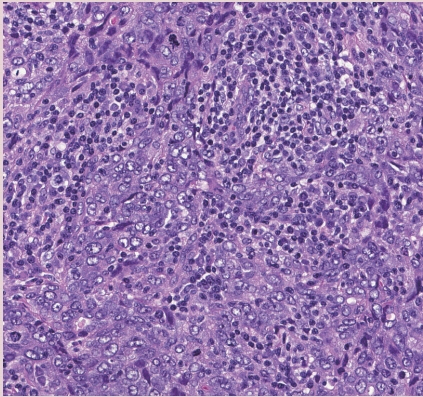J Pathol Transl Med.
2022 May;56(3):170-171. 10.4132/jptm.2022.04.25.
What’s new in breast pathology 2022: WHO 5th edition and biomarker updates
- Affiliations
-
- 1Department of Pathology and Laboratory Medicine, Dartmouth-Hitchcock Medical Center, Lebanon, NH, USA
- 2Department of Pathology, Medical College of Wisconsin, Milwaukee, WI, USA
- 3Department of Pathology, The Ohio State University Wexner Medical Center, Columbus, OH, USA
- KMID: 2529810
- DOI: http://doi.org/10.4132/jptm.2022.04.25
Abstract
- The 5th edition WHO Classification of Breast Tumours (2019) has introduced changes to our practices. Highlights are presented below, with a focus on modifications to morphological subtype categorization. In addition, we summarize important updates to ER and PR testing made in the 2020 ASCO/CAP guidelines, and briefly discuss PD-L1 and Ki-67 testing in breast cancer.
Figure
- Full Text Links
- Actions
-
Cited
- CITED
-
- Close
- Share
- Similar articles
-
- What’s new in kidney tumor pathology 2022: WHO 5th edition updates
- What’s new in genitourinary pathology 2023: WHO 5th edition updates for urinary tract, prostate, testis, and penis
- What’s new in soft tissue and bone pathology 2022–updates from the WHO classification 5th edition
- What’s new in adrenal gland pathology: WHO 5th edition for adrenal cortex
- What’s new in hematopathology 2023: updates on mature T-cell neoplasms in the 5th edition of the WHO classification




